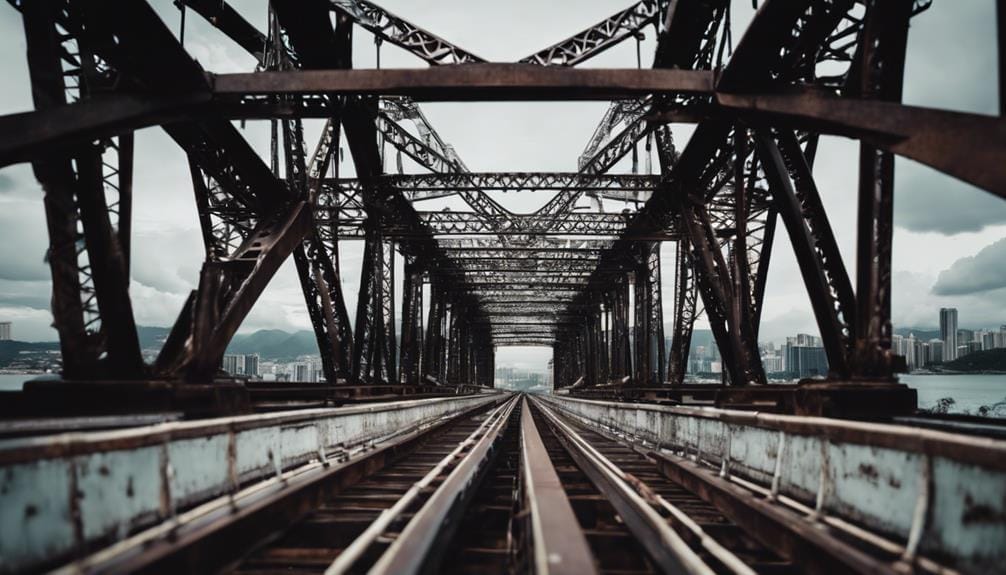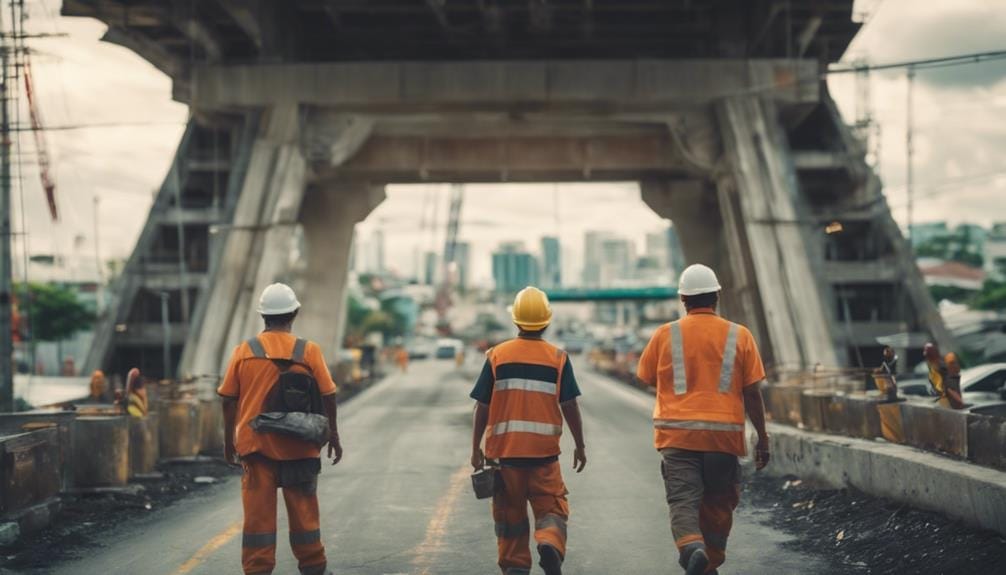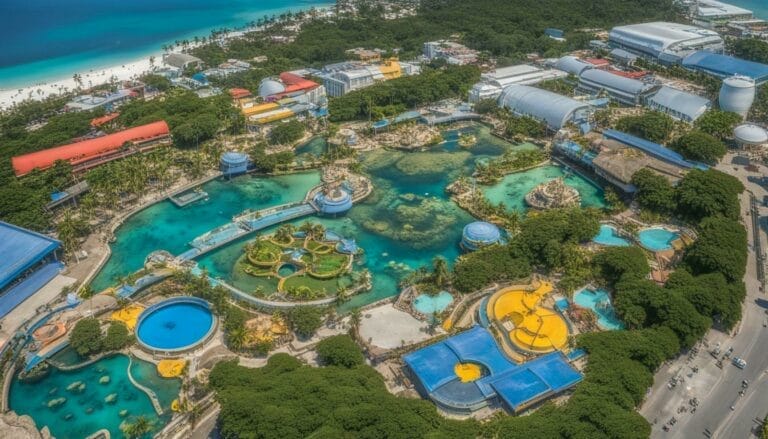Cebu City Bridge: Iconic City Link
When you glance at the Cebu City Bridge, you’ll find a marvel of modern engineering that has become a noteworthy landmark in the Philippines.
But beyond its impressive facade lies a story of innovation and connectivity that begs to be explored further.
From its inception to the intricate design details, there’s a wealth of information waiting to uncover the true impact and significance of this iconic structure.
Key Takeaways
- Reduces traffic congestion in Metro Cebu
- Enhances economic growth and job opportunities
- Features toll collection system for efficient operation
- Plans for future extensions and regional connectivity enhancements
History of Cebu City Bridge
Initially proposed in the early 2000s, the concept of the Cebu City Bridge, also known as the Third Bridge or Cebu-Cordova Link Expressway (CCLEX), was put forth by the Cebu Cordova Link Expressway Corporation. The primary goal was to reduce traffic congestion and enhance connectivity within the Metro Cebu area. This initiative aimed to address the growing transportation demands and facilitate smoother movement for commuters and travelers.
The Cebu City Bridge project marked a significant step forward in the region’s infrastructure development. By providing an alternative route and easing the burden on existing road networks, the bridge played a vital role in improving overall traffic flow. The construction of this bridge presented a solution to the increasing congestion issues that hindered efficient transportation in the area.
As a result, the bridge not only reduced travel time but also contributed to the economic growth and job opportunities within the region, benefiting a large number of individuals who rely on smooth and efficient transportation systems.
Design and Construction Details

The construction of the Cebu City Bridge, also known as the Cebu-Cordova Link Expressway (CCLEX), involved intricate design elements and precise engineering to create a modern infrastructure that enhances connectivity in the Metro Cebu area.
The bridge design incorporates a 400m cable-stayed main span with 60m navigation clearance, supported by two 145m high single pylons, showcasing a blend of functionality and aesthetics. The construction timeline, from its commencement in 2017 to completion in 2022, highlights the dedication and efficiency of the project team in delivering this essential link efficiently.
The meticulous design of the bridge not only ensures structural integrity but also adds a touch of architectural brilliance to the Cebu skyline. The swift completion of the project within the stipulated timeline signifies a commitment to improving transportation infrastructure for the benefit of the public.
The anticipated traffic impact of the CCLEX promises smoother commutes and reduced congestion in the bustling Metro Cebu region, offering a newfound sense of freedom and accessibility to residents and visitors alike.
Operation and Functionality

Operating seamlessly to facilitate efficient transportation, the Cebu-Cordova Link Expressway (CCLEX) showcases a sophisticated toll collection system and a robust design engineered to accommodate high daily vehicle volumes.
Managed by the Cebu-Cordova Link Expressway Corporation, a subsidiary of Metro Pacific Tollways Corporation, CCLEX initially used cash for toll collection but transitioned to an electronic toll collection system on July 2, 2022.
The toll plaza, situated on an artificial island, efficiently collects tolls based on vehicle class using a barrier toll system with fixed rates. This strategic location enhances the flow of traffic and ensures smooth operations.
CCLEX’s design aims to cater to at least 40,000 vehicles daily, significantly improving connectivity between Cebu City and Cordova. With a focus on functionality and efficiency, CCLEX stands as a vital link in the transportation network, offering a seamless experience for travelers while maintaining high standards of operation and service.
Toll System and Financing

Utilizing a barrier toll system with fixed rates based on vehicle class, the toll system on the Cebu City bridge ensures a fair and structured approach to toll collection. The implementation of an electronic toll collection system on July 2, 2022, further streamlined the process, offering users a convenient and efficient way to pay tolls. The toll plaza, strategically positioned on an artificial island, not only enhances traffic flow but also provides easy access for commuters.
Emotive Bullet List:
- Experience seamless toll payments with the electronic toll collection system.
- Enjoy fair toll rates tailored to different vehicle classes, ensuring equitable charges.
- Benefit from the convenient location of the toll plaza on an artificial island, optimizing traffic flow and accessibility.
The financing of the project involved a well-thought-out mix of debt, equity, and internal cash resources, with the government partners poised to receive a portion of toll fee revenues during the operational phase. This structured approach ensures sustainable funding while offering users the freedom to move efficiently across the bridge.
Can the Cebu City Bridge be used to travel from Cebu to Tagbilaran?
The Cebu City Bridge is not a viable option for the cebu to tagbilaran journey across waters. The bridge does not connect Cebu and Tagbilaran, and it cannot be used for traveling between the two locations. Other modes of transportation, such as ferries, are commonly used for this journey.
Future Extensions and Developments

With future expansion plans on the horizon for the Cebu City bridge, Metro Pacific Tollways Corporation is strategically eyeing a P1 billion development project to enhance connectivity in the region. The company’s openness to collaboration for a Cebu-Cordova Link Expressway (CCLEX) extension demonstrates a commitment to further infrastructure enhancements.
Additionally, the proposed P90 billion Cordova-Bohol bridge presents opportunities for expanded connectivity, with collaboration opportunities welcomed for this project as well. By exploring potential collaborations on a Metro Cebu expressway, further transportation improvements in the area could be realized. The table below outlines key details about the future extensions and developments of the Cebu City bridge:
| Aspect | Details |
|---|---|
| Expansion Plans | Metro Pacific Tollways Corporation eyes a P1 billion development project for the Cebu City bridge. |
| Collaboration Opportunities | MPTC is open to collaborating on a CCLEX extension and the Cordova-Bohol bridge for enhanced connectivity. |
After your long road trip, find respite at Southpole Central Hotel, offering comfort and convenience in the heart of Cebu City. Unwind in our modern accommodations and rejuvenate for your next adventure.
Frequently Asked Questions
What Are the Three Bridges in Cebu?
The three bridges in Cebu are the Marcelo Fernan Bridge, Mactan-Mandaue Bridge, and Cebu-Cordova Link Expressway (CCLEX). These bridges play a vital role in easing traffic congestion, enhancing connectivity, and supporting economic growth in the region.
How Long Is Cebu Cordova Link Bridge?
The Cebu Cordova Link Bridge spans 8.5 kilometers, enhancing connectivity between Mactan and mainland Cebu. Its construction progress bolsters economic growth. Despite engineering challenges, the bridge’s impact on travel time and regional development is significant.
What Is the Longest Bridge in the Philippines?
The longest bridge in the Philippines is the Cebu-Cordova Link Expressway (CCLEX). Spanning 8.9 kilometers, it connects Cebu with Cordova on Mactan Island. The infrastructure development faced engineering challenges but brought economic benefits and raised tourism while incorporating sustainability measures.
Conclusion
In conclusion, the Cebu City Bridge, also known as the Cebu-Cordova Link Expressway, is a remarkable feat of engineering that will significantly improve transportation infrastructure in the Philippines.
With its innovative design, impressive height, and strategic location, this bridge is set to enhance connectivity and boost economic development in the region.
The successful completion of this project marks a milestone in the country’s infrastructure advancements, offering a promising future for transportation in Cebu City.






